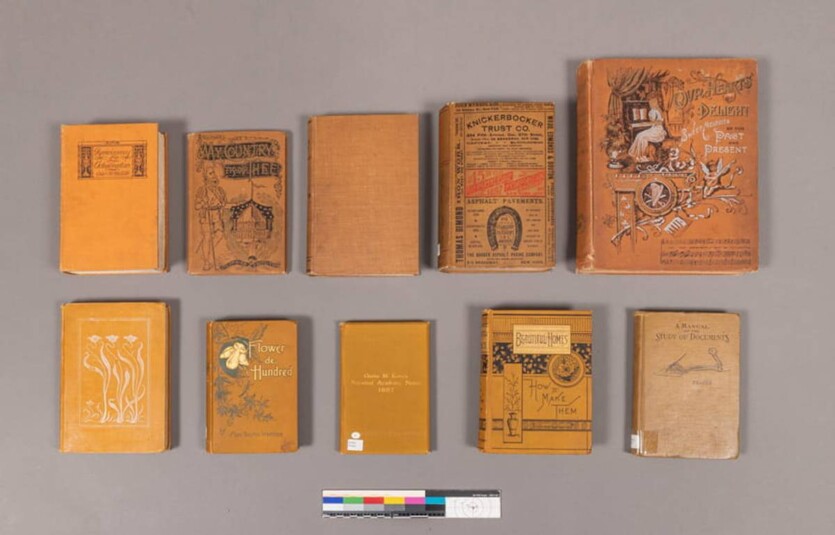
Brightly colored cloth covers of Victorian books can hide health hazards for readers, collectors, and librarians.
A group of researchers from Lipscomb University (USA) presented the results of their study at the fall conference American Chemical Society. They applied three methods of analysis, one of which had not been used before to study books, to assess the presence of hazardous dyes in the university collection.
Abigail Hoermann, a chemistry student at Lipscomb University, said:
«Old books with toxic dyes may be stored in universities, public libraries, and private collections. Users are at risk if pigments from cloth covers get on their hands or into the air through inhalation».
The research began after librarians approached the university’s chemistry department with a request to check brightly colored books from the 19th and early 20th centuries from the Beaman Library in the United States. Professor Joseph Weinstein-Webb became interested in this topic after learning about previous research at the Winterthur Museum, Garden & Library The Winterthur Museum, Garden & Library is a world-renowned museum complex in Delaware, USA, which includes a vast collection of American decorative arts, historic gardens, and a specialized research library..
The Winterthur Museum, Garden & Library is a world-renowned museum complex in Delaware, USA, which includes a vast collection of American decorative arts, historic gardens, and a specialized research library..
For the Lipscomb University book research project, the team used three spectroscopic methods:
- X-ray fluorescence (XRF) to qualitatively check for arsenic or other heavy metals in book covers.
- Optical emission spectroscopy with inductively coupled plasma (ICP-OES) to determine the concentration of these metals.
- X-ray diffraction (XRD) to identify pigment molecules containing these metals.
Analysis revealed the presence of lead and chromium in high concentrations in some samples. Further investigation revealed that these heavy metals are part of lead chromate — the compound that gives yellow color to the pigment used by Vincent van Gogh in his sunflower paintings.
The researchers found that the level of heavy metals in some books exceeded the permissible limits for chronic exposure according to the standards of the US Centers for Disease Control and Prevention (CDC) In the most contaminated cover, the lead concentration was twice the CDC standard, and the chromium concentration was almost six times higher.
Following these discoveries, the Lipscomb Library packed all the brightly colored books from the 19th century that had not yet been tested into plastic bags. The books that were found to contain dangerous dyes were also packed and removed from public circulation.


Spelling error report
The following text will be sent to our editors: